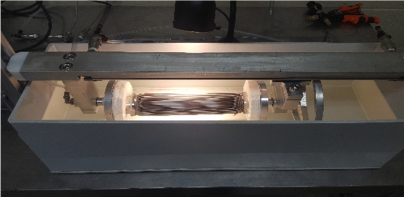 Above: In-House Bubble Point Testing Fixture
Above: In-House Bubble Point Testing Fixture
What is the Bubble Point Test for Filters?
Bubble Point Testing is typically performed using the industry standard SAE ARP901 "Bubble Point Test Method". Bubble point testing is used by NFC as standard manufacturing quality control check and integrity test for our stainless steel woven wire mesh elements, and welded disc assemblies to ensure the welding process and filter mesh used are up to our strict quality standards.
How is the Bubble Point Test Performed?
NFC has several bubble point test fixtures, dependent on the type of product being tested in house. Bubble point testing consists of attaching a clean, dry compressed air line through a seal at the filter inlet, the pressure is then slowly raised using a pressure regulator until the first steady stream of bubbles is observed. A manometer is used to measure the pressure at which the first stream of bubbles occurs. This measurement is related to the largest pore size of the filter element.
Purpose of the Bubble Point Test
Although ARP901 is a "Recommended Practice", Bubble Point Testing is used as an industry standard to determine the largest (absolute) micron size of a given filter element. This test is typically used as an acceptance test when a stringent requirement is needed for aerospace applications. NFC's standard manufacturing process includes bubble point testing at several different manufacturing stages conducted using sampling size with a zero defect policy.


